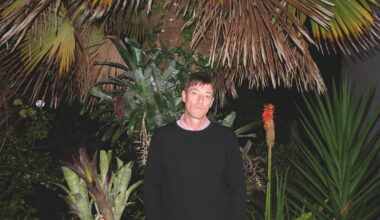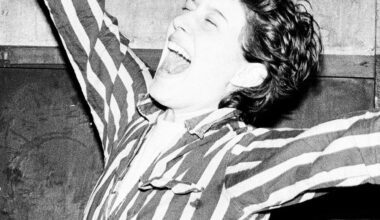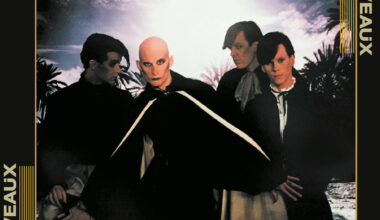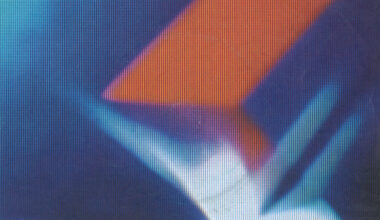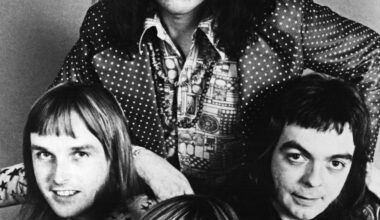Martin Moscrop talks us through A Certain Ratio’s cover version of Banbarra’s 1975 funk barnstormer, ‘Shack Up’

“When A Certain Ratio first started out we were listening to the Velvet Underground, Kraftwerk, Brian Eno, Wire… in fact, when Tony Wilson saw us play an early gig at The Factory Club, he described us as Manchester’s answer to the Velvet Underground.
“We saw some amazing bands at those Factory parties, Suicide, Cabaret Voltaire, Manicured Noise, The Fall, The Tiller Boys, The Human League, Pere Ubu, Joy Division, Iggy Pop, PIL, Magazine… this was way before The Haçienda, when it was at The Russell Club in Hulme. Around that time we also started listening to James Brown, Parliament, and Funkadelic, eventually moving deeper into jazz-funk, Brazilian music like Hermeto, Airto, Flora Purim.
“The jazz scene in Manchester was pretty good in the early 80s. There was Kalima, The Jazz Defektors, Yargo and a few others. We were also popular on the London scene, playing places like The WAG Club, Bass Clef, Ronnie Scott’s and we used to go to local clubs like Berlin, The Gallery, Legends, Rafters, and even The Haçienda played a bit of jazz when it first opened – mainly due to the DJ, Hewan Clarke.
“The first jazz and funk place we went to was a club called Rufus where Hewan was DJing. Then we started going to Legends where the DJs were Colin Curtis and Greg Wilson. Greg played electro and Colin played Latin and jazz-funk. Hewan became a good friend and, rather than having a support band, we used to take him on tour with ACR as our DJ. That was quite ground-breaking at the time, but loads of people do it now.
“It was Simon [Topping] who brought the 45 of Banbarra’s ‘Shack Up’ to a band rehearsal. According to an old girlfriend of his, he’d first heard the song at her house. He’d picked up a copy from Yanks – a record store in Manchester that sold deleted US imports, all at 50p each. It was a brilliant spot where you could find some amazing stuff. The majority of my funk, soul, and jazz collection was purchased there in the late 1970s and early 80s.
“When Simon first played ‘Shack Up’ to us we thought, ‘Wow, that’s so simple. We could play that!”. We’d never done a cover version before. We decided to have a go in rehearsal and it came together really quickly. Me and Simon had played trumpet in the brass band at school when we were younger so we decided to get our dusty old horns out. I think it was the first time we played trumpet on an ACR tune.
“It was such a simple two-note riff. Donald [Johnson] was familiar with the song, so he knew the arrangement and drum pattern straight away. Donald hadn’t been in the band for long, and having a drummer really created new rhythmical opportunities. We were so excited about learning a proper funk tune that we convinced Tony Wilson we should record ‘Shack Up’ as the planned debut Factory Benelux release. We never set out to change the original. We were trying to copy it, but because we were non-musician punks, apart from Donald, it came out the other end sounding like it did.
“We recorded ‘Shack Up’ at The Graveyard Studio – which was in the basement of Stewart Pickering’s house on Church Road in Prestwich. Next to a graveyard – hence the name. I think Stewart was a school teacher, so the studio was really just his part-time hobby. We also recorded side one of ‘The Graveyard And The Ballroom’ there, which was our first, cassette only, album on Factory.
“The Graveyard was a four-track studio, so everything was put down live on two tracks, with vocals, percussion and trumpets overdubbed later. I remember Jez [Kerr] playing a pair of sheep jaw bones as percussion on the break – keeping the beat, along with the claves. Jez collected bones at the time, picking up improvised instruments from a local abattoir!
“I think we spent a day recording and mixing ‘Shack Up’, which cost us £50. Stewart would get really good results considering the equipment was very basic. It’s pushing those limitations that gives those recordings the character and feel they have.
“It was Tony Wilson’s idea to have an in-house producer, like the big American labels. His vision was for Factory Records to have a distinctive sound, which is where Martin Hannett came in. The problem with Martin was that he was difficult to work with, so bands tended to only work with him for a short while. The other issue was that Martin had such a unique production technique, that he would end up changing the bands sound quite a bit, which wasn’t to everyone’s taste.
“After he produced ‘To Each…’ for us, we said to Tony that we wanted to produce our next album ourselves. The result was ‘Sextet’, which ended up being one of our most popular albums. We did some great work with Martin though, with the pinnacle being ‘Flight’. ‘Shack Up’ was our first production without him. To be honest there wasn’t much production involved – apart from making sure we all got to the studio, and someone pressed record!”
For more ACR, visit acrmcr.com
